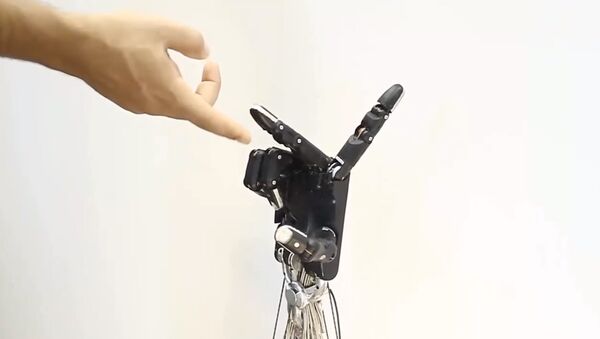Nowadays, robots can do almost anything: they walk, run, crawl, swim, clean up, complete space missions and even play the piano and cook your pancakes!
However, tasks that require hand manipulation — rolling, pivoting, bending, sensing friction and other things humans easily do — give robots a headache.
"A lot of robots today have pretty capable arms but the hand is as simple as a suction cup or maybe a claw or a gripper," said lead author Vikash Kumar, an Indian doctoral student in computer science and engineering from the University of Washington.
The group of scientists has spent years building one of the most highly capable five-fingered robot hands in the world. They designed an accurate simulation model that enables a computer to analyze movements in real time. Their latest demonstration shows the robot hand rotating an elongated object. Moreover, the model gets progressively more skillful at spinning the object because of its ability to learn algorithms that help it plan which actions should be taken to achieve the desired result — in essence, the robot can 'think.'
The team created algorithms that allowed a computer to model and plan highly complex five-fingered movements such as typing on a keyboard or dropping and catching a stick. As the robot hand performs different tasks, the system collects data from various sensors and motion capture cameras and employs machine learning algorithms to continually refine and develop more realistic models.
"It's like sitting through a lesson, going home and doing your homework to understand things better and then coming back to school a little more intelligent the next day," Kumar noted, according to the University of Washington official website.
The robot hand, which can move faster than a human hand, was built by the team at a cost of about $300,000. It's too expensive for regular commercial or industrial use right now, but it allows the scientists to push core technologies and test innovative control strategies.


